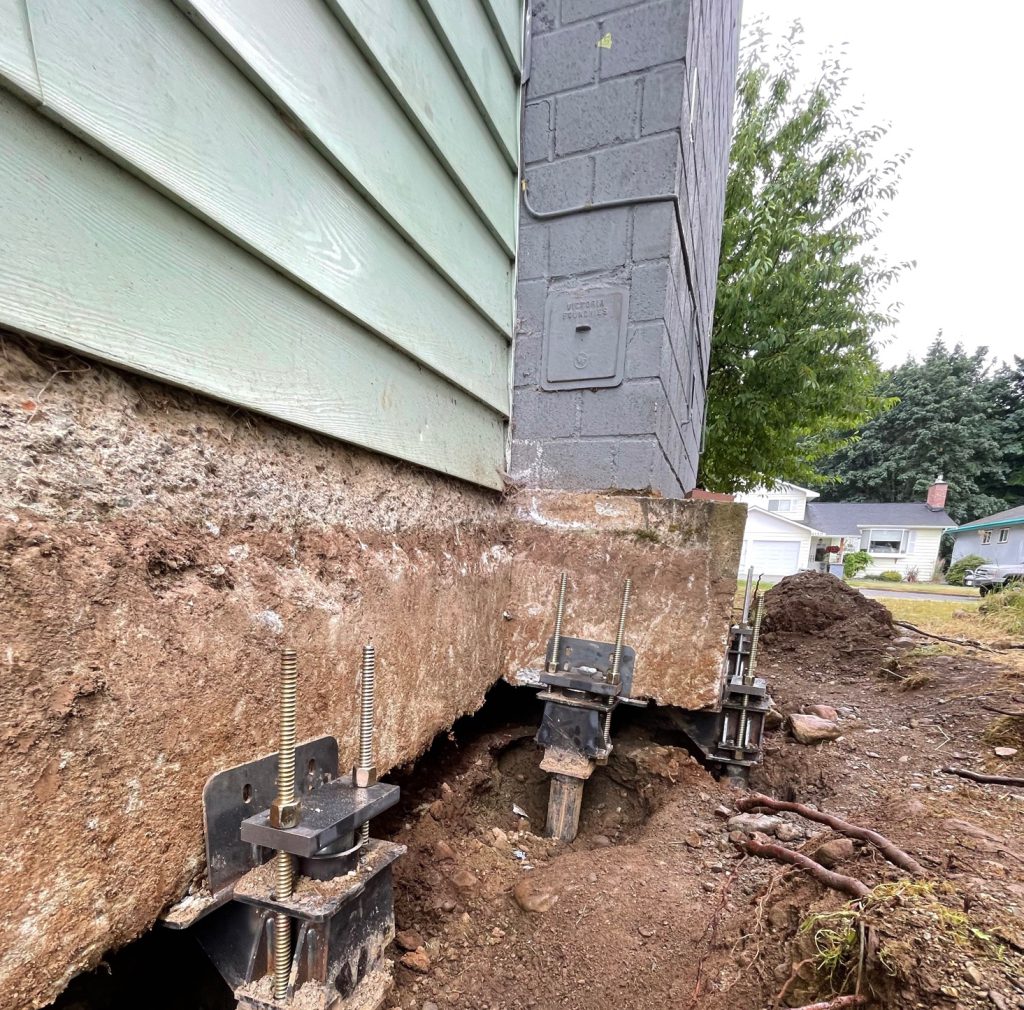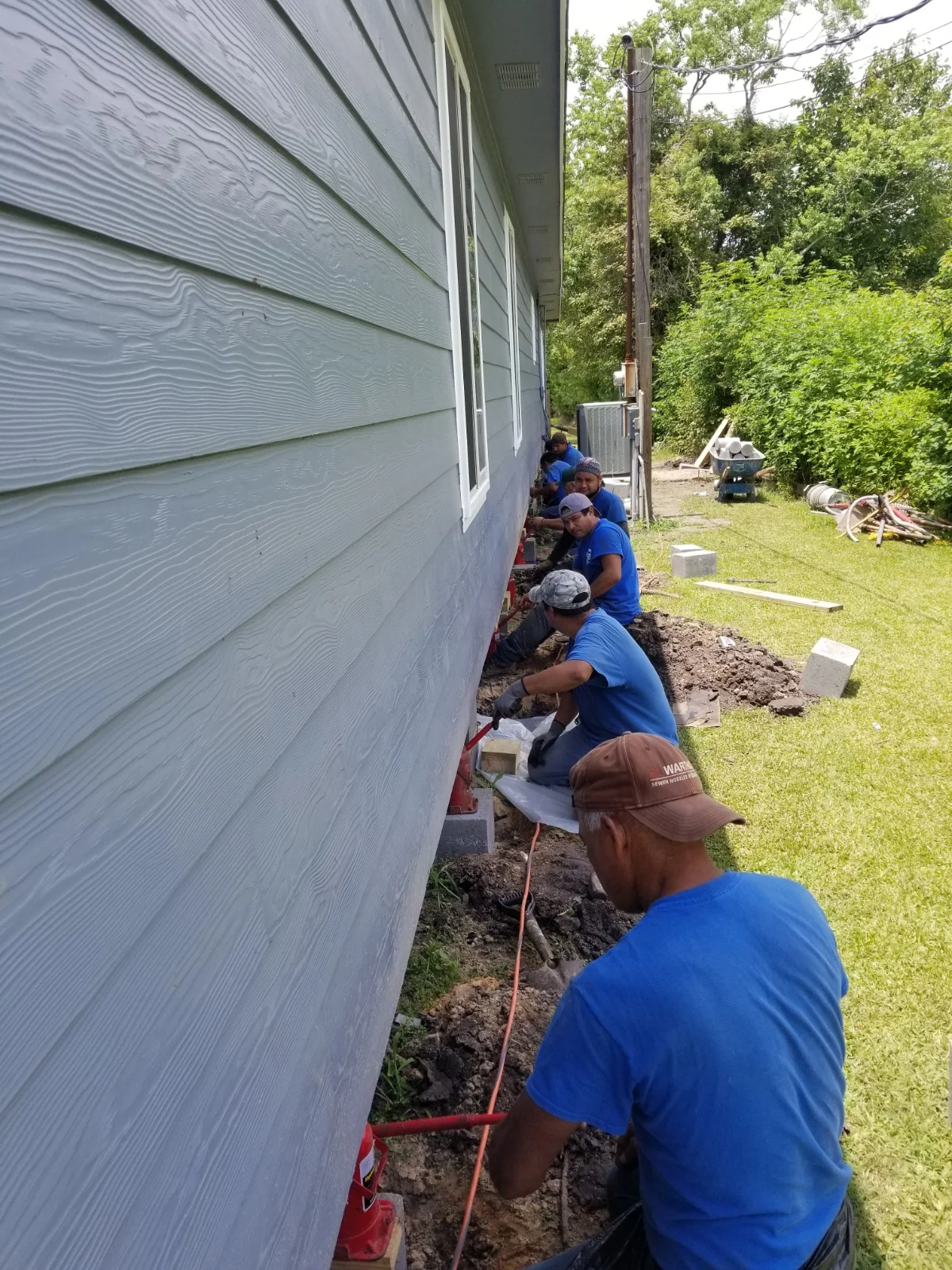Foundation Repair Dallas: Ensuring Safety And Security and Stability for each Structure
Wiki Article
Structure Repair Service Techniques: A Comprehensive Summary
Foundation Repair Work Techniques: A Detailed ReviewFoundation issues can cause considerable architectural damage to structures, endangering their stability and security. Recognizing structure fixing methods is critical for designers, contractors, and home owners associated with building and upkeep projects. This thorough summary supplies a thorough assessment of different techniques utilized to address foundation issues, guaranteeing a strong and protected foundation for any structure.
The overview covers necessary strategies such as slab jacking, pier and beam of light reinforcement, cellar wall surface anchoring, soil stablizing, and structure base. Each strategy is explained in-depth, highlighting its application, efficiency, and purpose. Foundation Repair Dallas. Furthermore, the introduction reviews factors to think about when choosing the appropriate fixing technique, such as soil problems, building type, and budgetary restrictions
Whether you are a homeowner seeking to attend to foundation problems or a professional in the building and construction industry, this detailed overview functions as a valuable resource, offering essential expertise and understandings into foundation repair work strategies.
Slab Jacking
Piece jacking, often employed as a trusted and often made use of technique, elevates sunken concrete slabs by injecting a supporting material below, efficiently restoring the structure to its original degree. This technique is typically utilized in scenarios where the ground has actually resolved or changed, causing concrete slabs to sink or come to be uneven. Slab jacking is a cost-effective choice to entirely changing the concrete, as it resolves the source of the issue and gives a durable service.
Additionally, slab jacking can be finished swiftly, frequently within a day, lessening disruption to the residential property proprietor. This strategy is appropriate for a vast variety of concrete structures, consisting of driveways, walkways, patios, and cellar floorings.
Pier and Beam Support
An additional typically used technique in structure repair service is pier and beam of light reinforcement, which constructs upon the previous technique of slab jacking to supply added architectural assistance and security to the structure. This strategy is especially beneficial in areas with weak soil problems or when the foundation has received considerable damages.Pier and light beam reinforcement includes mounting upright concrete or steel piers beneath the foundation to move the weight of the framework to much deeper, extra stable dirt layers. These piers are purposefully positioned along the perimeter of the structure and at indoor load-bearing walls to uniformly distribute the tons and avoid further negotiation.
To reinforce the beam of lights, additional steel or concrete supports are included to reinforce and stabilize the existing light beams. This is done by affixing steel brackets or beams to the existing beam of lights and safeguarding them with screws or various other fasteners. The support products are chosen based upon the details requirements of the foundation and the extent of the damages.
Pier and light beam reinforcement not only provides prompt support to the structure but additionally helps to stop future settlement and structural damage. FCS Foundation Repair Dallas Flatwork Concrete Services. By redistributing the lots and transferring it to more powerful soil layers, this method guarantees the long-term stability and stability of the structure
Cellar Wall Anchoring
Cellar wall anchoring is an important strategy used in structure repair to enhance the security and architectural integrity of the foundation, particularly in areas prone to soil activity and cellar wall failing. When the soil around a foundation experiences excessive wetness or changes as a result of sinking foundation geological factors, it can exert substantial pressure on the basement walls, creating them to split, bow, or perhaps collapse. This can bring about serious structural issues and jeopardize the security of the entire building.Basement wall anchoring involves setting up specialized anchors or helical tiebacks into the ground beside the foundation walls. These anchors are developed to permeate deep right into secure soil or bedrock, producing a strong connection in between the ground and the foundation. By distributing the load of the foundation uniformly and resisting the side forces exerted by the soil, cellar wall surface anchoring offers additional support and protects against further motion or wear and tear of the wall surfaces.
There are different kinds of basement wall anchoring systems readily available, including steel wall supports, helical tiebacks, and carbon fiber bands. The choice of system relies on aspects such as the seriousness of the wall movement, dirt problems, and the particular needs of the structure. Specialist structure fixing contractors assess these factors and recommend the most appropriate anchoring service for each and every special situation.
Soil Stablizing
To deal with the obstacles of soil motion and make certain the stability of structures, soil stablizing methods are used in foundation repair work. Dirt navigate here stablizing describes the process of improving the homes of the dirt to improve its load-bearing capability and decrease its sensitivity to movement. There are numerous methods used for dirt stabilization, each customized to the particular qualities of the dirt and the needs of the structure.
Mechanical stabilization is another extensively utilized approach that includes the physical adjustment of the dirt. This technique consists of methods such as compaction, which raises the density of the dirt, and soil substitute, which includes getting rid of weak dirt and changing it with even more secure materials.
Additionally, soil stabilization might also involve making use of geosynthetic materials like geotextiles, check these guys out geocells, or geogrids. These materials are placed within the dirt to enhance it and distribute the load extra equally, lowering the threat of negotiation or heave.
Structure Foundation
Exactly how can structure underpinning properly attend to the obstacles of dirt motion and guarantee the stability of frameworks? Foundation base is a technique made use of to enhance and support existing structures that have actually been affected by soil motion. This approach includes extending the deepness or breadth of the structure to an extra secure dirt layer or redistributing the load throughout a larger area, thereby improving its load-bearing capacity.There are a number of kinds of foundation underpinning techniques typically utilized in the industry. One technique is mass concrete foundation, where new concrete is poured underneath the existing structure to boost its deepness and security. Another method is light beam and base underpinning, which entails constructing reinforced concrete light beams below the existing foundation, moving the load to much deeper, more secure dirts.
Helical stack foundation is likewise frequently made use of. It entails setting up helical piles right into the ground below the structure, which offer extra support and stability. These stacks are screwed into the soil and can be made use of to transfer the load of the framework to more experienced dirt layers.
Final Thought
In final thought, foundation fixing strategies play an important function in preserving the architectural stability of buildings. Piece jacking, pier and beam of light support, cellar wall surface anchoring, dirt stabilization, and foundation underpinning are all effective approaches used to resolve foundation problems. By executing these techniques, homeowner can guarantee the stability and security of their frameworks for years to find.Cellar wall surface anchoring is an important strategy made use of in foundation repair to improve the stability and architectural integrity of the structure, especially in areas prone to soil activity and basement wall surface failing.To address the challenges of dirt movement and make certain the stability of foundations, soil stabilization methods are used in structure fixing. There are numerous approaches used for soil stablizing, each customized to the specific characteristics of the dirt and the demands of the foundation.
Structure support is a technique made use of to enhance and maintain existing structures that have actually been impacted by soil movement. Piece jacking, pier and beam of light support, cellar wall anchoring, soil stabilization, and structure base are all effective techniques made use of to address structure issues.
Report this wiki page